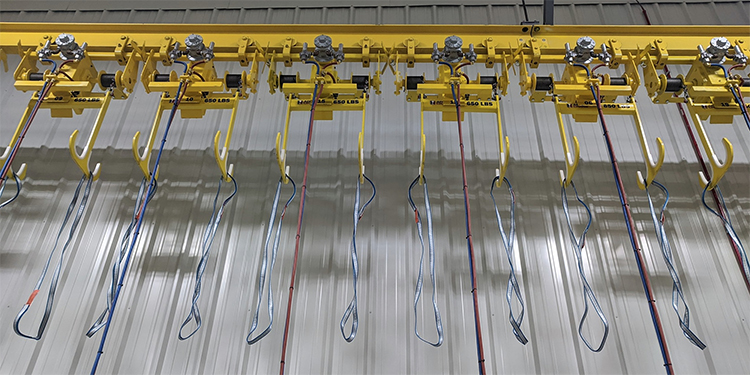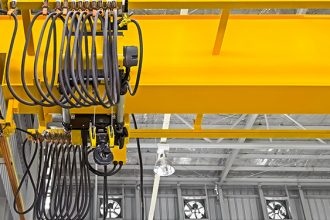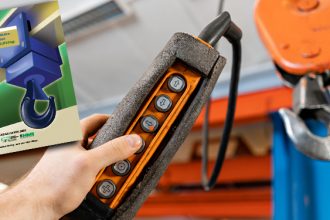6 Signs That A Monorail System Or Components Need To Be Replaced

Overhead-mounted monorails transport heavy, bulky materials throughout a facility or process, then position their payload. Consisting of either patented or enclosed track upon which carriers or trolleys equipped with a hoist (or other lifting device) travel, their proper operation is essential to ensure the safety and efficiency of an operation.
Whether powered manually, by air or by electricity, all monorails should be routinely inspected at a variety of intervals, including prior to use at the start of a shift, frequently (monthly for normal use; weekly for heavy use; and daily for severe use), or periodically (yearly for normal service; semi-annually for heavy service; or quarterly for severe service application). Sometimes an inspection will reveal damage that can be repaired. In this case, the monorail (or damaged component part) should be removed from service and not used until the repair is completed. However — if repair is not sufficient — the system or component will need to be upgraded or replaced with a new one. To help monorail owners make that determination, here are six key signs to look for:
- Application change. As a general rule, an entire monorail system typically is not replaced unless the process or handling application has changed significantly. Such factors include a dramatic shift in load capacity, distance spanned, or elevation required.
- Unavailable replacement parts. Some monorails and their components are so well maintained and have performed so well for a long period of operation, that they outlive their manufacturer’s ability to support them and replacement parts are no longer available. For example, if replacement parts are no longer available for the control panels or end trucks, those will likely need to be replaced entirely with new components. When service parts can no longer be reliably sourced, causing extended periods of downtime, the affected components should be replaced.
- Extreme wear. Trolley and end truck wheels are designed to wear out long before beam flanges or runway rails. If a divot is discovered in the tracks, (often caused by spinning wheels) is can be typically filled with weld and ground smooth. Guide rollers, end truck or trolley wheels, motors, suspension shafts, and suspenders are most often replaced when damaged or worn below the discard limit.
- Excessive repair costs. When a problem is identified, but the cost of the repair (parts, service, or a combination of both) exceeds 50% to 60% (or more) of the cost of a replacement component, an operation should give serious consideration to replacing the monorail (or its components) and investing in a new one. A newer model will be supported by the manufacturer, have replacement parts more readily available, and will likely be backed by a warranty for a period of time, allowing it to deliver better value than the previous system
- Recurring unplanned downtime. If the monorail or its components routinely fail to function as expected — such as slow or erratic response time to manual, wired or remote control — its improper operation is likely causing excessive loss of productivity and increased operational and maintenance costs. When the aggregate of those costs over a given time approaches the cost of new equipment in the same timeframe, replacement should be seriously considered.
- Inspector recommendation. In addition to the pre-shift inspections performed by the operator, more in-depth frequent or periodic inspections shall be conducted by in-house maintenance technicians, manufacturers’ service representatives, or an independent monorail inspection professional. These evaluations may reveal a problem not visible to an operator. Excessive component wear, cracks, distortion, warping, or other internal damage — or any other part that displays indications of potential failure — will be noted by the inspector. Based on that assessment, the system or its components may be deemed beyond reasonable repair, and replacement recommended.
Looking for more information on the safe use and maintenance of monorails? Connect with the members of the Monorail Manufacturers Association (MMA), who are the industry’s leading suppliers of monorails and workstation cranes. Available to answer any questions, the group also offers a variety of resources — including a product certification program, recommended practices for workstation cranes and patented track systems, and more — via its website at www.MHI.org/MMA.



